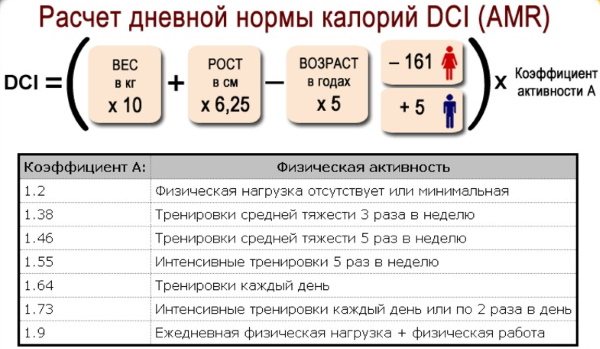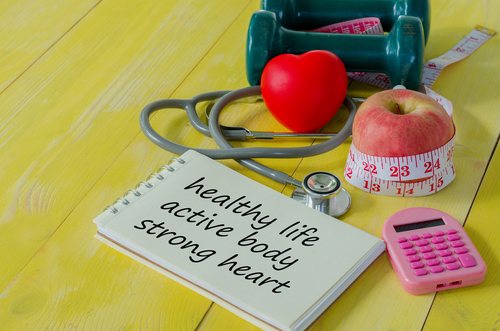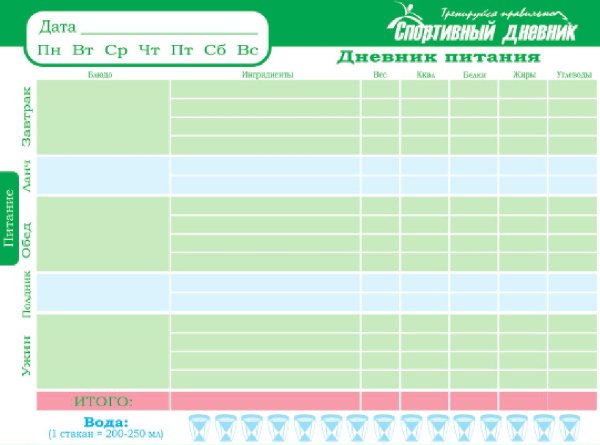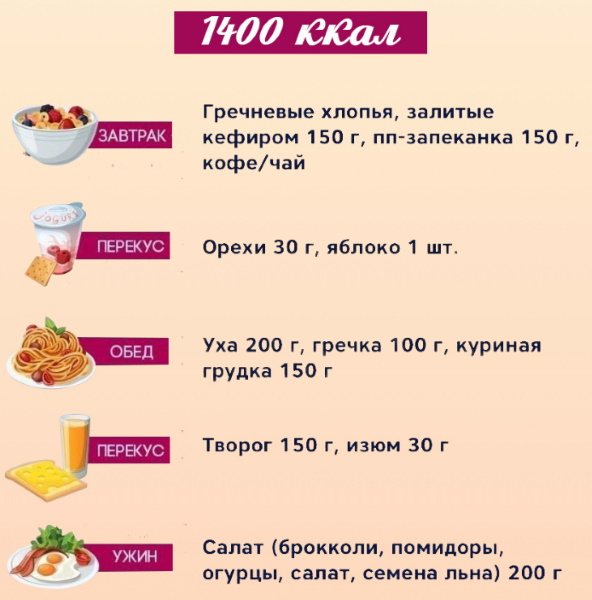Every person needs energy for normal functioning. You can get it from food. Calories are found in all foods and drinks. After food enters the body, it takes time for the elements to transform into energy. Each product has a different rate of energy intake and consumption. The maximum daily intake of energy for each person is also different.
If you are overweight, then you need to create a calorie deficit - then the body will have to gradually use up the deposited calories. But in order not to cause harm to the body, you must first figure out how to create a calorie deficit without harm to health.
Essence and basic principles
Calorie deficit for weight loss is a term that indicates how much the caloric content of foods should be less than the energy expended by a person.
Human energy consumption is related to the following indicators:
- age;
- physical activity;
- constitutional body type.
The average person receives 2000-2500 calories per day. Scientists have calculated that the “gold standard”, which satisfies all the nutritional needs of the body, is only 1,300 calories. With this amount, there are no excess reserves that are deposited in the tissue. Thus, a deficit of food intake should be created.
Calculation methods
The calorie deficit for weight loss is calculated relative to the daily value of the nutritional value of foods.
There are three different categories of deficiency:
- small;
- average;
- big.
If the calorie deficit is too low, weight loss will occur slowly. If it’s high, then getting rid of fat will happen at a rapid pace. But, as with any diet, there are pitfalls. When calorie intake is low, the body goes into starvation mode. The body “thinks” that it will not receive anything else and goes into a state of rest.
Metabolism slows down, calories are burned more slowly, the weight loss process reaches a plateau and weight stays the same. This process is insidious in that, having become disillusioned with the method of losing weight, a person begins to eat heavily, which leads to rapid weight gain.
If the calorie deficit is too large, then the person begins to lose weight quickly. But at the same time, his productivity is reduced, muscle mass is lost, and along with weight loss, health problems are acquired. It is necessary to find the middle ground of a moderate calorie deficit that suits each individual.
The ideal calorie deficit is 20%:
- For example, for a man or woman, the daily level to maintain activity is 2,500 calories. 20% is (2500x20): 100 = 500 calories every day. This means creating a 500 calorie deficit each day. Conclusion: You should consume no more than 2,000 calories daily.
This is the percentage that will allow you to minimize the loss of muscle mass and fat without loss of physical activity. How are calories counted to create a deficit?
Step 1. Calculate the basal metabolic rate, BMR (basal metabolic rate):
- Female BMR = (9.99 x weight) + (6.25 x height) – (4.92 x age).
- Male BMR = (9.99 x weight) + (6.25 x height) – (4.92 x age) + 5.
Step 2. Physical activity occurring in 1 day is calculated:
- 1.2 – minimum activity (sedentary work, no physical activity);
- 1.376 – weak activity (walking, sometimes running);
- 1.45 – average type of activity (workouts up to 4 times a week);
- 1.65 – increased (daily exercise in the gym);
- 1.73 – high;
- 1.8 – very high activity.
Step 3. Formula for achieving a calorie deficit:
- BMR x activity level = normal calorie count.
- To create a calorie deficit, it is necessary to subtract 15-20% from the norm. This figure will constitute a calorie deficit.

If your weight is light, you should stop at 15%. If you need to get rid of 10 kg or more, then you should take 20%. People with large weights, when they plan to lose 40 kg, should take a deficit of 25 to 30%. The number of calories should be calculated immediately for deficit, maintenance and weight gain.
Approximate calorie standards for women:
- Age – 35.
- Height – 165.
- Weight – 75.
- Physical activity – 1.2.
- The percentage of calorie deficit or surplus is 20.
Total: to lose weight per day you need to consume no more than 1390 kcal, to maintain weight without changing it - 1737 kcal, to gain weight - 2084 kcal.
Norm for men:
- Age – 35.
- Weight – 90.
- Height – 180.
- Physical activity – 1.2.
- Calorie deficit – 20%.
Bottom line: to lose weight you need 17682 kcal per day, to gain weight - 2674, to maintain - 2228 kcal. If the calorie deficit is created correctly, then the ideal rate of weight loss will be from 300 to 900 grams per week. Physiologically normal weight loss per week is 500 g. To control weight, you should weigh yourself daily in the morning, on an empty stomach.
If weight loss occurs normally, then you can continue to follow the diet. If weight loss occurs more slowly than desired, you should recalculate the calorie deficit and increase it slightly, but not by more than 25 kcal. From time to time, you should adjust your calorie deficit to your changed weight.
Let's start losing weight correctly
To lose weight you need to create a calorie deficit - this is the main rule of losing weight. It would seem that you need to start limiting your diet, and the problem is solved. Alas, not everything is so simple.
First of all, let us remind you that you can create a calorie deficit in two ways:
- Eat less - cut back on calories from food (BJU balance is not so important)
- Spend more - exercise, be active, don’t sit still, move a lot (you can eat the same as before)
Ideal weight loss is a reasonable combination of both methods, but often people choose one thing, for example, they exercise a lot and eat very little. Especially those who want to urgently lose weight in the last week before a vacation or wedding.
Under no circumstances should this be done. You cannot immediately load yourself with a large amount of physical activity and at the same time eat little. A huge energy deficit will not speed up weight loss, because when your spending doubles your nest egg, you will begin to experience serious stress.
There are no universal tips on how to properly create a calorie deficit. Some people don’t like sports at all and feel more comfortable eating less, while others do the opposite.
However, as a trainer, I would like to note that switching to dietary nutrition gives more significant results, according to many years of practice and research in different countries.
Contraindications for use
A calorie deficit for weight loss carries a certain risk if foods low in nutrients or, conversely, unhealthy foods are chosen for the diet. The calories that a person consumes are needed in two cases: to live and to be physically active. Eating few calories over time leads to rapid weight loss.

This is normal for those who are overweight, but it also leads to increased cholesterol levels in the gallbladder, which affects the secretion of bile. These processes contribute to the formation of stones over time. People who already have gallstones should not follow a calorie deficit diet.
Restricting calories can cause iron deficiency, lower protein levels, which will affect the immune system and the body's ability to fight colds. This is especially true for athletes who consume 30% fewer calories than they should. People with weakened immune systems should also not resort to diets.
Expectant mothers are not recommended to reduce the amount of nutrients, as this negatively affects the development of the child. In women who frequently resort to diets, they create a calorie deficit, the menstrual cycle is disrupted or stops.
With the cessation of menstruation, the risk of bone loss due to lack of estrogen increases, and this creates the preconditions for the development of osteoporosis and bone fracture. People with low blood pressure should not resort to such diets. Eating according to the principle of a calorie deficit in itself leads to low blood pressure and problems with heart rhythm.
Often, in women who greatly reduce the amount of calories they need, the normal functioning of the thyroid gland is disrupted. During the fasting period, they experience a feeling of cold, depression, and their energy level decreases.
Severe calorie restriction affects fertility. This is especially true for women, since their ability to ovulate depends on their hormone levels. Studies have shown that reducing calories by 22-24% leads to suppression of reproductive function in women.
Secrets of creating scarcity

There are certain life hacks that will help you understand how to create a calorie deficit without changing your diet or increasing physical activity.
Method 1: accelerating metabolism. This method allows you to increase your basal caloric expenditure. In particular, for this it is enough to take the same amount of calories, but in a larger number of meals. Divide meals by 2-3 times compared to the current number of meals, and the accelerated metabolism will feel a constant desire to replenish energy, which will trigger catabolic processes aimed at breaking down excess reserves of adipose tissue, with the accumulation of glycogen cells
Method 2: use of adrenaline stimulants. These include caffeine, ephedrine and other energy drinks. Adrenaline stimulants release a large amount of energy into the body from all sources, which ultimately leads to an acceleration of metabolism and increased passive expenditure. But most importantly, it increases your reserve of strength and allows you to work more.
Method 3: using thermogenics. This category of drugs increases body temperature. And according to Rubner's law, the higher the general body temperature, the more energy is spent on maintaining it.
Useful tips
When starting a diet, you should listen to the recommendations of nutritionists:
- You can't drastically reduce your calories. Rapid weight loss will lead to equally rapid weight gain. In addition, the person will feel tired, overwhelmed, dizzy, and have stomach problems.

A calorie deficit for weight loss will be effective if done wisely. You should not drastically reduce your calorie intake. - Calorie norms should be recalculated depending on changes in loads and lifestyle.
- The body pays attention not to the daily calorie deficit, but to how much was consumed over several days in a row. If you eat in a deficit one day and in a surplus the second, you will end up maintaining calories.
- Meal times should not be missed. Hunger contributes to the development of increased appetite, and a person eats twice as much as he planned.
- You cannot completely limit yourself in food. One day a week you can allow yourself to eat everything that is harmful, but only in the morning and in a small portion.
- Doctors do not recommend reducing the caloric intake below 1000 kcal. You should not eat less than this number, even if the weight loss is not noticeable. When calorie intake is reduced, muscle mass is lost and metabolic problems develop.
- It is not recommended to eat food with zero percent fat. Low-fat foods do more harm than good. Without fats, hair becomes dry and brittle, skin cracks, and nails break.
What is useful to remember when following a diet:
- Drink more clean water. Carbonated, mineral waters will do more harm during this period than pure spring water. It dulls the feeling of hunger, and this is important when dieting.
- You should learn to refuse the offers of others. “No” to baked goods, cakes, sweets and other tasty but useless products that friends and acquaintances persuade you to eat.
- You should learn to adjust recipes to suit your needs. If you really want something baked, you should use rye and whole grain flour. For salads, use homemade mayonnaise. It is better to make mashed potatoes from baked potatoes, and cook minced meat with the addition of grated vegetables.
- Sit down at the table with food mindfully. You should turn off the TV and phone and think only about which foods you ate were healthy and which were not. You should eat from small plates, chew your food thoroughly and do not rush to swallow the entire portion at once.
- Plan your daily diet. To do this, you should keep a food diary or write down the menu in weight loss programs, of which there are many on websites. There you can also pre-calculate the amount of calories, fat, protein and carbohydrates in the intended dish.

- Buy scales for weighing food, do not do it by eye. The weight of food should be measured before cooking. The calorie content of many foods in raw and cooked form is different.
- A calorie deficit is created not only by the number of calories cut, but also by daily workouts that promote weight loss. There is no opportunity to go to the gym, which means you have to walk more, ride a bike, dance, jump rope.
Weight standards
Perhaps it’s worth starting with the most important thing, namely, determining weight standards, determining the level of body fat and the very concept of calorie deficit in dietetics.
There are classic formulas that determine weight standards for men and women:
- Height – 110 for men;
- Height – 120 for women.
For athletes, slightly different formulas for calculating weight are used, which take into account increasing mass. In particular these are:
- Height – 100 for men;
- Height – 110 for women.
How correct is it to follow this formula? Let's be honest - it is far from perfect and is only a statistical factor among athletes who are not involved in weightlifting.
What do you really need to consider? First of all, you need to take into account the following indicators, which will allow you to determine the weight that is optimal for you:
- Temperature factors;
- Bone thickness;
- Fat layer;
- Testosterone hormone levels;
- Level of general physical fitness.
As you can see in this formula there is not a single factor associated with growth.
Let's look at it in order.
How temperature factors affect total weight. The fact is that our body constantly adapts to its environment. And one of the important factors is thermoregulation, which is possible only with sufficient accumulation of energy reserves. This energy can be located in glycogen stores or fat. But the point is extremely simple. The hotter the region you live in, the lower your overall body fat level should be.
This means that the weight of equally trained athletes with the same metabolism and other related factors can differ by more than 10 kilograms. For example, for residents of the northern regions, the accumulation of excess fat is not genetic, but a purely opportunistic factor. Therefore, if they fall below a certain weight threshold, then this will become excessive stress for the body, in which it will try by any means to return to its optimum.
The next factor is bone thickness. Few people take this factor into account, which is a consequence of the original physique. But the weight of the bones is almost 30% of the total weight. And therefore, a person with heavy and wide bones can actually weigh 20 kilograms more than a professional bodybuilder with the same height.
Let's move on to another factor that determines weight standards - this is the fat layer. Regardless of other cumulative factors, for the average person it ranges from 15 to 25%. For athletes, this figure shifts downwards. Those. in fact, an athlete, despite his large mass, is thinner than a non-athlete.
The general level of physical fitness affects how much additional energy the body will store. And the level of hormones is the main regulator of overall body weight, as it can independently change the level of body fat, regardless of metabolic rate.
Only by taking into account all these factors can we determine the optimal weight for each person. Therefore, you should not pay attention to standardized formulas that reflect only a statistical sample among people in a certain region.
Having determined the optimal weight to strive for, you can move on to the most important thing - creating a calorie deficit.
Product table
Knowing how many calories you need to eat per day to lose weight also means knowing where those calories will come from. First of all, it is protein, which is the most important component of a diet for weight loss.
What does protein do:
- maintains muscle mass;
- saturates the body;
- helps burn calories.
To perform all functions, the body must receive from 0.8 to 1.5 g of protein for every 500 g of a person’s weight.
Which foods contain a lot of protein:
- chicken meat, without skin;
- all types of fish;
- lean beef;
- eggs;
- beans;
- milk;
- cheese.

When creating a menu, keep in mind that 1 g of protein contains 4 calories. Many foods contain minimal calories. They can be added to dishes to reduce calories.
Products containing up to 20 kcal:
- tomatoes;
- radish;
- pure water.
Products containing from 20 to 30 kcal:
- celery;
- bell pepper;
- broccoli;
- spinach;
- eggplant;
- pumpkin;
- Champignon;
- cowberry.
Many products contain from 30 to 50 kcal:
- green beans;
- zucchini;
- strawberry;
- watermelon;
- curdled milk;
- beet;
- cranberry;
- oranges;
- apples;
- apricots;
- kohlrabi.
When adhering to a deficiency diet, one should not forget about foods containing healthy fats: fish, cottage cheese, egg whites, olive, sunflower, hemp oil, and lean meats. In addition to animal fats, the menu should include foods with vegetable proteins: peas, beans, lentils, soy, nuts, seeds.
Don't forget about cheeses. They should be chosen with medium fat content, and remember that they strengthen the skeletal system, especially white cheeses. If a person is carried away by a sharp reduction in calories, the body responds with hunger and cravings for sweets. You can replace harmful sugars with dark chocolate, dried fruits, cottage cheese with berries, fruit mousses and jellies.
Main menu
A calorie deficit for weight loss should not be a daily menu based on fasting and refusing any food in the name of diet.

1500 calorie menu for those who want to eat healthy:
| Products | Weight | Cal, kcal | Squirrels | Fats | Carbohydrates | ||
| Monday | |||||||
| Buckwheat porridge | 200 | 170.7 | 6.09 | 1.59 | 34.88 | ||
| Coffee | 150 | 136.4 | 2.97 | 2.63 | 4.94 | ||
| Strawberry jelly | 150 | 122.4 | 1.67 | 0.31 | 27.49 | ||
| Pike perch broth | 250 | 168.0 | 38.40 | 0.34 | 0.00 | ||
| Carrot-apple cutlets | 200 | 183.0 | 3.12 | 6.52 | 27.96 | ||
| Boiled pike perch | 200 | 145.5 | 31.95 | 1.95 | 0.00 | ||
| Apple | 165 | 77.5 | 0.66 | 0.66 | 16.17 | ||
| Frittata with zucchini | 150 | 103.1 | 4.94 | 5.52 | 7.94 | ||
| Curd and pumpkin dessert | 150 | 154.5 | 11.12 | 2.46 | 23.76 | ||
| Fruit smoothie | 150 | 141.6 | 5.28 | 2.88 | 19.92 | ||
| Yogurt bio-balance | 130 | 115.5 | 4.65 | 2.25 | 19.20 | ||
| Total | 1518.3 | 110.84 | 27.10 | 182.25 | |||
| Tuesday | |||||||
| Vitamin salad | 200 | 154,0 | 2,80 | 9,80 | 13,80 | ||
| Hibiscus tea | 250 | 12,5 | 0,75 | 0,00 | 1,50 | ||
| Curd cake with apples | 150 | 140,3 | 9,45 | 1,38 | 22,0 | ||
| Vegetable soup | 250 | 107,5 | 4,25 | 4,50 | 15,50 | ||
| Squid with beans | 200 | 296,9 | 18,64 | 20,90 | 8,74 | ||
| Spinach-pineapple detox smoothie | 238 | 104,7 | 2,38 | 0,48 | 22,37 | ||
| Cabbage casserole | 250 | 218,8 | 13,73 | 14,70 | 8,70 | ||
| Syrniki | 150 | 228,8 | 18,0 | 3,18 | 31,34 | ||
| Yellow tea | 150 | 211,5 | 30,0 | 7,65 | 6,0 | ||
| Total | 1474,2 | 100.0 | 62,59 | 129,95 | |||
| Wednesday | |||||||
| Omelette with green beans and milk | 200 | 182,4 | 11,20 | 12,60 | 5,40 | ||
| Coffee with milk | 150 | 136,4 | 2,97 | 2,63 | 4,94 | ||
| Tomato salad (with vegetable oil) | 200 | 140,8 | 2,28 | 9,76 | 11,22 | ||
| Cod stew | 200 | 202,0 | 19,40 | 10,20 | 7,80 | ||
| Fruits | 150 | 84,0 | 0,90 | 0,30 | 19,35 | ||
| Roasted pepper | 150 | 55,5 | 2,78 | 0,01 | 10,83 | ||
| Chicken liver pate | 100 | 150,0 | 13,0 | 5,40 | 3,20 | ||
| Carrot salad | 150 | 78.0 | 6,30 | 1,64 | 9,45 | ||
| Apple Golden | 200 | 106,0 | 1,0 | 0,40 | 21,40 | ||
| Berry smoothie | 360 | 136,8 | 4,68 | 4,32 | 19,80 | ||
| Curd cake with apples | 150 | 233,8 | 15,75 | 2,30 | 36,67 | ||
| Total | 1505,7 | 80,25 | 49,55 | 150,06 | |||
| Thursday | |||||||
| Whey bread | 100 | 260 | 7,80 | 10,45 | 4,37 | ||
| Coffee with milk | 150 | 136,4 | 2,97 | 2,63 | 4,94 | ||
| Eggplants in sour cream | 200 | 150,0 | 2,70 | 9,88 | 12,44 | ||
| Vinaigrette with vegetable oil | 150 | 90,6 | 2,86 | 2,21 | 14,85 | ||
| Jellied pike perch | 150 | 135,7 | 15,75 | 7,67 | 3,66 | ||
| Olivier with yogurt | 150 | 156,0 | 10,75 | 9,31 | 7,35 | ||
| carrot juice | 150 | 42,0 | 1,65 | 0,15 | 9,60 | ||
| Fried red rice (carrots, onions, champignons, sunflower oil) | 100 | 139,0 | 5,08 | 2,09 | 24,54 | ||
| Vitamin salad (vegetable) | 150 | 115,5 | 2,10 | 7,35 | 10,35 | ||
| Pear tea drink | 150 | 10,5 | 0,30 | 0,15 | 2,10 | ||
| Salted saffron milk caps | 75 | 16,9 | 1,51 | 0,60 | 0,75 | ||
| Pike perch broth | 300 | 252,0 | 57,0 | 0,51 | 0,00 | ||
| Total | 1504,5 | 111,08 | 52,99 | 94,94 | |||
| Friday | |||||||
| Scrambled eggs from 2 eggs with onions | 150 | 198,0 | 12,0 | 13,50 | 6,90 | ||
| Banana, Strawberry and Flaxseed Smoothie | 167 | 182,0 | 5,68 | 8,02 | 22,71 | ||
| Apple Golden | 165 | 87,4 | 0,82 | 0,33 | 22,71 | ||
| Vegetable salad | 100 | 76,8 | 9,62 | 2,45 | 1,81 | ||
| Greek fish soup in a slow cooker | 150 | 135,0 | 10,05 | 8,70 | 2,25 | ||
| Tuna pate | 100 | 66,6 | 9,17 | 2,39 | 1,98 | ||
| Cottage cheese and apple dessert | 142 | 103,7 | 10,51 | 1,42 | 11,93 | ||
| Chamomile tea | 100 | 1,0 | 0,00 | 0,00 | 0,20 | ||
| Orange jelly | 150 | 132,0 | 4,20 | 0,00 | 30,45 | ||
| Cupid baked in foil | 200 | 247,4 | 33,80 | 9,60 | 1,40 | ||
| Classic oat drink Nemoloko | 250 | 150 | 2,50 | 8.00 | 16,25 | ||
| Brie cheese | 45 | 131,0 | 9,45 | 10,35 | 0,00 | ||
| Total | 1510,9 | 107,80 | 64,76 | 113,54 | |||
| Saturday | |||||||
| Protein dish with chicken fillet and green beans | 250 | 152,5 | 20,50 | 1,93 | 11,78 | ||
| Coffee with milk | 150 | 136,4 | 2,97 | 2,63 | 4,94 | ||
| chicken broth | 300 | 45,0 | 6,0 | 1,50 | 0,90 | ||
| Oatmeal on water | 150 | 132,0 | 4,50 | 2,55 | 22,50 | ||
| Baked trout | 200 | 172,0 | 31,80 | 3,40 | 2,0 | ||
| Oat bread | 100 | 226,0 | 7,0 | 3,20 | 40,80 | ||
| Zucchini appetizer with cheese | 100 | 56,0 | 2,90 | 2,80 | 4,30 | ||
| Stuffed cabbage rolls with mushrooms | 370 | 462,5 | 15,91 | 2,22 | 55,46 | ||
| Curd dessert with raspberries and cookies | 150 | 284,0 | 9,75 | 7,80 | 47.10 | ||
| Total | 1513,9 | 101,33 | 28,03 | 155,30 | |||
| Sunday | |||||||
| Manno-oat pancakes | 100 | 230,0 | 7,0 | 7,50 | 23,90 | ||
| Green tea | 150 | 0,00 | 0,00 | 0,00 | 0,00 | ||
| Buckwheat with chicken in the oven | 280 | 448,0 | 25,48 | 27,16 | 26,88 | ||
| Soup with peas and meatballs | 285 | 136,8 | 7,98 | 6,84 | 11,12 | ||
| Zucchini salad with cucumber | 249 | 124,5 | 3,24 | 9,46 | 7,72 | ||
| Cabbage salad with cheese | 200 | 232 | 12,60 | 16,80 | 6,60 | ||
| Tarragon lemonade | 250 | 25,0 | 0,25 | 0,00 | 6,00 | ||
| Cheese Tofu | 100 | 73,0 | 8,19 | 4,20 | 0,60 | ||
| Carrot sponge cake | 70 | 226,8 | 3,01 | 13,30 | 24,22 | ||
| Total | 1496,1 | 67,76 | 85,26 | 117,03 | |||
In many of the dishes presented above, sour cream, cream and sunflower oil are added. To reduce calorie content, you can cook without these additives. But you shouldn’t completely exclude fats from your diet, as this leads to digestive problems.
When to expect an effect
Scientific research confirms that weight loss through a calorie deficit will have greater benefits with increased physical activity. Jogging and aerobics have a good effect on fat reserves, causing them to decrease. And by practicing regular cardio-physical training and swimming, a person risks losing not only body fat, but also muscle mass.

In the long term, after 1-1.5 years, a person will lose weight if he sticks to a calorie deficit. But in order to lose weight and maintain it without harming your health, you should create a menu in such a way that there is a balance between healthy foods and those you like.
The goal of any diet, be it strict or based on a calorie deficit, should not be a certain weight and size, but health. If a person sets a goal for himself – losing weight, then he must go towards it gradually, without exceeding the body’s capabilities.
Author: Belyaeva Anna
What happens to the body?
In the first days, metabolism is accelerated, producing a huge amount of adrenaline, which allows you to use fatty tissue (precisely intended for a hunger strike) to maintain strength. All this is done so that a person finds a source of food and is able to restore the calorie balance.
All this can last up to a week. During this time, the body leaves the lion's share of salt, fat and muscle tissue. The body optimizes all resources. And yes, you can really lose up to 15 kilograms in a week. In return you have to pay with your health. After all, the body burns out the main energy consumer, “muscle tissue,” which leads to dystrophy.
Actual fat loss is limited to 25% of the total weight lost, which means that immediately after normalization of nutrition, the weight will increase by at least ¾ of what was lost.
In addition, when trying to optimize the body’s resources, the work is disrupted:
- Gastrointestinal tract.
- Of cardio-vascular system.
- Ligamentous apparatus.
- Endocrine system.
Each time, diet can lead to irreversible changes.











